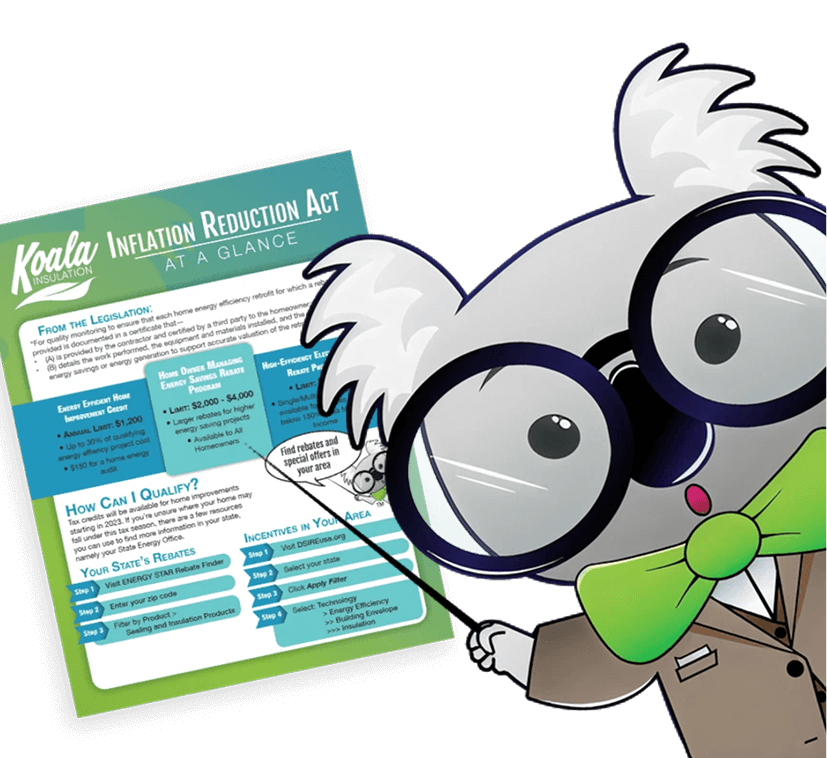In the world of building science, insulation isn’t one-size-fits-all. The climate where you live plays a major role in how your home should be insulated. For homeowners in hot and humid regions like Southwest Florida, insulation strategies must go beyond just keeping heat out—they also need to manage moisture, airflow, and indoor comfort year-round.
At Koala Insulation of Southwest Florida, we specialize in creating tailored insulation solutions that stand up to Florida’s intense heat and high humidity. In this blog, we’ll break down how insulation requirements shift in these types of climates, what materials work best, and how proper installation helps you save on energy costs while protecting your home from moisture damage.
The Challenges of Insulating in Hot and Humid Climates
Southwest Florida’s tropical conditions present unique insulation challenges that differ from cooler or arid regions. With average summer highs regularly hitting the 90s and humidity levels that often exceed 70%, homes face both heat gain and moisture infiltration—two major threats to comfort and building integrity.
Let’s look at what makes hot and humid regions different:
- Moisture is as big a problem as heat. Trapped humidity can lead to condensation, mold, and mildew growth.
- Ventilation and air sealing are crucial. Without proper air control, your home can become muggy and uncomfortable.
- Traditional insulation strategies from colder climates often don’t apply.
This is why Koala Insulation of Southwest Florida uses specialized products and techniques designed to perform in high-heat, high-humidity environments.
Key Goals of Insulation in Hot, Humid Areas
In climates like Florida, insulation isn’t just about keeping the house cool—it also plays a major role in controlling moisture, airflow, and indoor air quality. The key goals include:
1. Thermal Control
Insulation helps keep hot outdoor air from heating up your home’s interior, reducing the workload on your HVAC system.
2. Moisture Management
High humidity levels mean insulation must resist moisture intrusion and allow walls to “breathe” without allowing water vapor to collect inside them.
3. Air Sealing
Stopping the infiltration of warm, moist air from outside is just as important as adding thermal resistance. Insulation should be paired with effective air sealing.
4. Energy Efficiency
Proper insulation reduces energy consumption by allowing your AC to maintain consistent indoor temperatures without overworking.
At Koala Insulation of Southwest Florida, we address all four goals through a whole-home insulation strategy customized to the local climate.
Best Insulation Types for Hot and Humid Regions
Not all insulation products are suitable for humid conditions. Some trap moisture, which can lead to problems like rot or mold. Here are some of the top materials we recommend in Southwest Florida:
1. Spray Foam Insulation
Spray foam is ideal for hot and humid areas because it combines insulation and air sealing in one step. It creates a moisture-resistant barrier that protects your home from both heat and humidity.
Benefits:
- Excellent R-value
- Air and moisture sealing
- Helps prevent mold and mildew
- Reduces cooling costs
Spray foam is especially effective in attics, crawl spaces, and wall cavities that are vulnerable to moisture and air leaks.
2. Blown-In Fiberglass
Blown-in fiberglass is often used to supplement insulation in attics or between walls. When installed correctly, it provides strong thermal resistance with some sound-dampening benefits.
Benefits:
- Budget-friendly
- Good thermal performance
- Non-combustible
- Quick to install
For homes that already have insulation but need an upgrade, Koala Insulation of Southwest Florida can perform a top-off with blown-in fiberglass to improve energy efficiency.
3. Mineral Wool (Rock Wool)
Mineral wool is naturally moisture-resistant and provides excellent sound control. It’s well-suited for interior walls and ceilings, especially where noise reduction and durability are a priority.
Benefits:
- Water and mold resistant
- Fireproof
- Soundproofing qualities
- Maintains shape over time
We often use mineral wool in multi-family homes or homes near busy streets for its dual insulation and soundproofing capabilities.
4. Radiant Barriers
Radiant barriers are especially useful in Florida’s sun-soaked attics, where radiant heat can quickly raise indoor temperatures. Installed under the roof decking, they reflect heat away from the home.
Benefits:
- Reduces attic temperatures by up to 30°F
- Improves HVAC efficiency
- Pairs well with other insulation types
Radiant barriers are an effective way to boost performance without replacing existing insulation.
Why Air Sealing and Ventilation Matter
In hot and humid climates, insulation alone isn’t enough. Without proper air sealing, humid outside air can leak into your home and condense on cooler surfaces—leading to moisture problems and poor HVAC performance.
Air sealing closes gaps around:
- Windows and doors
- Attic hatches
- Ductwork
- Plumbing and electrical penetrations
Additionally, mechanical ventilation systems can help maintain balanced humidity levels and promote better indoor air quality. At Koala Insulation of Southwest Florida, we design insulation and air management solutions as part of a comprehensive comfort system.
Florida Building Code and R-Value Requirements
The Florida Building Code specifies minimum R-values for different parts of the home in hot and humid zones. In Southwest Florida, common requirements include:
- Attics: R-38
- Exterior walls: R-13 to R-15
- Floors over unconditioned spaces: R-13
However, these are minimum requirements. At Koala Insulation, we often recommend going beyond code to achieve better energy performance and year-round comfort—especially in older homes or remodels.
Signs You May Need an Insulation Upgrade
How do you know if your home’s insulation isn’t up to the task of handling Florida’s heat and humidity? Look for these warning signs:
- High energy bills, especially in summer
- Rooms that are hard to keep cool
- Musty smells or visible moisture in the attic or walls
- Drafts or hot spots throughout the house
- Old or deteriorating insulation
If any of these sound familiar, it’s time for an energy audit or insulation inspection. Koala Insulation of Southwest Florida offers free consultations to identify trouble areas and recommend improvements.
Conclusion: Get Insulation That Works with the Climate
In hot and humid regions like Southwest Florida, insulation isn’t just about staying cool—it’s about managing moisture, controlling airflow, and keeping your home comfortable and efficient all year long. The right materials, paired with professional installation and air sealing, can make a huge difference in energy savings and indoor air quality.
At Koala Insulation of Southwest Florida, we understand the unique climate challenges our community faces. We specialize in custom insulation solutions that are built for the heat and humidity—not just code compliance.
Call us at (239) 689-7021 or visit https://koalainsulation.com/southwest-florida for a free estimate. Let us help you make your home cooler, drier, and more energy-efficient today.

